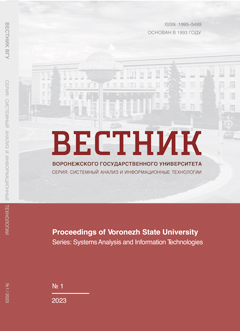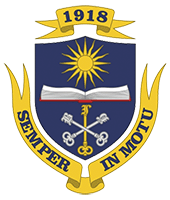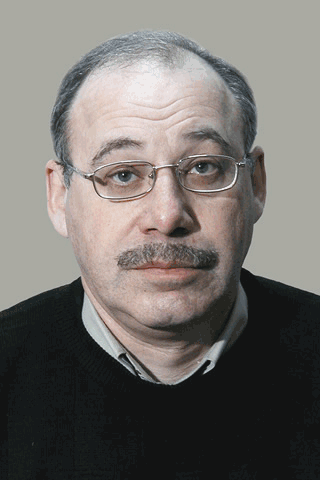Универсальная рекуррентная модель управления транспортными потоками в классе микроскопических моделей
Аннотация
Работа посвящена исследованию универсальной рекуррентной модели управления транспортными потоками и ее применению для моделирования и управления транспортом в сети городских дорог. Показано, что данная модель, построенная на основе теории управляемых сетей, является дискретной графовой моделью, учитывает неопределенности и позволяет решать задачи оптимального управления задержками рабочих фаз светофоров в классической постановке. Модель эффективно описывает подсети дорог при наличии данных о возможных маневрах, их вместимости, данных об ограничениях на количество машин на участках, о распределении потоков между различными направлениями и т.д. В случае наличия участков с частично неизвестными параметрами предложено аппроксимировать такие участки с помощью искусственных нейронных сетей и использовать гибридную модель, состоящую из универсальной рекуррентной модели и нейронных сетей. Описана структура гибридной модели. Гибридная модель позволяет получать детальное моделирование для наиболее важных участков сети, существенно уменьшить объем собираемых данных для моделирования и одновременно справиться с неполнотой информации о параметрах некоторых подсетей. Для подтверждения работоспособности всей гибридной модели, а также с целью поиска других видов гибридизации, в статье приводится методический пример расчета для нескольких тактов управления по универсальной рекуррентной модели. Универсальная рекуррентная модель сравнивается с другими наиболее популярными микроскопическими моделями транспортных потоков, моделями на основе клеточных автоматов, следования за лидером и предикатов. Представлен сравнительный анализ рассмотренных моделей по виду представления сетей, пространства, времени и пр.
Скачивания
Литература
2. Lighthill M. G., Whitham G. B. (1955) On kinetic waves II. A theory of traffic flow on long crowded roads // Proc. Roy. Soc. London. Ser. A. V. 229, 1178. P. 317–345. DOI
3. Elloumi N., Haj-Salem H., Papageorgiou M. (1994) METACOR: A Macroscopic Modelling Tool for Urban Corridor. Triennal Symposium on Transport Analysis. Capri, Italy.
4. Smirnova M. N., Bogdanova A. I., Zhu Z. J., Manenkova A. S., Smirnov N. N. (2014) Matematicheskaya model’ avtotransportnyh potokov s elementami vyazkouprugosti [Mathematical model of traffic flows with elements of viscoelasticity]. Mathematical modeling. 26(7). P. 54–64. (in Russian)
5. Kurzhanskij A. A., Kurzhanskij A. B., Varajya P. (2010) Rol’ makromodelirovaniya v aktivnom upravlenii transportnoj set’yu [The role of macromodeling in the active management of the transport network.]. Proceedings of the Moscow Institute of Physics and Technology. V. 2, No 4. P. 100–118. (in Russian)
6. Ben-Akiva M. E., Bierlair M., Koutsopoulos H. N., Mishalani R. (2002) Real-Time Simulation of Traffic Demand–Supply Interactions Within DynaMIT. Transportation and Network Analysis: Current Trends, Miscellenea in honor of Michael Florian (M. Gendreau and P. Marcotte, eds.). Kluwer Academic Publishers, Boston, Mass. P. 19–36. DOI
7. Jayakrishnan R., Mahmassani H. S., Hu T. Y. (1994) An Evaluation Tool for Advanced Traffic Information and Management Systems in Urban Networks. Transportation Research, Part C. V. 2, No. 3. P. 129–147. DOI
8. Horni A., Nagel K., Axhausen K. W. (2016) The Multi-Agent Transport Simulation MATSim. London: Ubiquity Press. 586 p. DOI
9. Algers S., Bernauer E., Boero M., Breheret L., Di Taranto C., Dougherty M., Fox K., Gabard G.-F. (1997) Review of Micro-Simulation Models. Review Report of the SMARTEST project.
10. Yang Q., Koutsopoulos H. N. (1996) A Microscopic Traffic Simulator for Evaluation of Dynamic Traffic Management Systems. Transportation Research C. 4. P. 113–129. DOI
11. Treiber M., Hennecke A., Helbing D. (2000) Congested traffic states in empirical observations and microscopic simulations. Physical Review E. 62 (2). P. 1805–1824. DOI
12. Van Wageningen-Kessels F., van Lint H., Vuik K., Hoogendorn, S. (2015) Genealogy of traffic flow models. EURO Journal on Transportation and Logistics. 4. P. 445–473. DOI
13. Jayakrishnan R., Oh J.-S., Sahraoui A. B. (2001) Calibration and Path Dynamics Issues in Microscopic simulation For Advanced Traffic Management and Information Systems. Transportation Research Record 1771. DOI
14. Smith M., Druitt S., Cameron G., MacArthur D. (1994) Paramics Final Report. University of Edinburgh.
15. Leclercq L. (2007) Hybrid approaches to the solutions of the “Lighthill-Whitham-Richards” model. Transportation Research Part B: Methodological. 41, 7. P. 701–709. DOI
16. Bourrel E., Lesort J.-B. (2003) Mixing Microscopic and Macroscopic Representations of Traffic Flow: Hybrid Model Based on the Lighthill – Whitham – Richards Theory. Transportation Research Record: Journal of the Transportation Research Board, No. 1852, Transportation Research Board of the National Academies, Washington, D.C. P. 193–200. DOI
17. Fellendorf M. (1996) VISSIM for Traffic Signal Optimisation. Traffic Technology International, Dorking, United Kingdom.
18. Hunt P. B., Robertson D. I., Bretherton R. D., Royale M. C. (1982) The SCOOT on-line traffic signal optimization technique. Traffic Engineering Control. 23. P. 190–192.
19. Robertson D., Bretherton R. (1991) Optimizing networks of traffic signals in real time – the SCOOT method. IEEE Transactions on Vehicular Technology. 40 (1). P. 11–15. DOI
20. Ming W., Qin Y., Xu J. (2015) The Application of SCOOT in Modern Traffic Network. Management & Engineering. 18. P. 93–98. DOI
21. Lowrie P. R. (1982) SCATS: The Sydney coordinated adaptive traffic system – Principles, methodology, algorithms. Proc. IEEE Int. Conf. Road Traffic Signaling. London, UK. P. 67–70.
22. Boillot F., Midenet S., Pierrelee J. C. (2006) The real-time urban traffic control system CRONOS: algorithm and experiments. Transportation Research Part C: Emerging Technologies. 14 (1). P. 18–38. DOI
23. Sen S., Head K. (1997) Controlled optimization of phases at an intersection. Transportation Science. 31 (1). P. 5–17. DOI
24. Semenov V. V. (2004) Matematicheskoe modelirovanie transportnyh potokov megapolisa [Simulation of traffic flows in megapolis]. Preprint No 34 Inst. of Appl. Math. named after M. V. Keldysh RAS. 44 p. (in Russian)
25. Shvetsov V. I. (2003) Matematicheskoe modelirovanie transportnyh potokov [Models of traffic flows]. Avtomatika i telemekhanika. 11. P. 3–46. (in Russian)
26. von Neumann J. (1966) Theory of self-reproducing automata. University of Illinois Press, Urbana and London.
27. Cremer M., Ludwig J. (1986) A fast simulation model for traffic flow on the basis of Boolean operations. Math Comp Simul. 28. P. 297–303.
28. Nagel K., Schreckenberg M. (1992) A cellular automaton model for freeway traffic. J Physics I France. 2. P. 2221–2229. DOI
29. Esser J., Schreckenberg M. (1997) Microscopic simulation of urban traffic based on cellular automata. Int J Mod Phys C. 8. P. 1025–1036. DOI
30. Chowdhury D., Saten L., Schadschneider A. (2000) Statistical physics of vehicular traffic and some related systems. Phys Rep. 329. P. 199–329. DOI
31. Maerivoet S., De Moor B. (2005) Cellular automata models of road traffic. Physics Reports. A Review Section of Physics Letters. 419. 1. P. 1–64. DOI
32. Knospe W., Santen L., Schadschneider A., Schreckenberg M. (2004) Empirical test for cellular automaton models of traffic flow. Physical review. E, Statistical, nonlinear, and soft matter physics. 70. 016115. DOI
33. Jin C. J., Wang W., Jiang R., Wang H. (2014) Cellular automaton simulations of a fourleg intersection with two-phase signalization. International Journal of Modern Physics C. 25(03). 1350099. DOI
34. Zhao H. T., Liu X. R., Chen X. X., Lu J. C. (2018) Cellular automata model for traffic flow at intersections in internet of vehicles. Physica A: Statistical Mechanics and its Applications. 494. P. 40–51. DOI
35. Zapotecatl J. L., Rosenblueth D. A., Gershenson C. (2017) Deliberative Self-Organizing Traffic Lights with Elementary Cellular Automata. Complexity. 2017. D 7691370. DOI
36. Vranken T., Schreckenberg M. (2020) Cellular Automata Intersection Model. Collective Dynamics. 5. A80:1–25. DOI
37. Jiang R., Wu Q.-S. (2006) Interaction beween vehicle and pedestrians in a narrow channel. Physica A: Statistical Mechanics and its Applications. 368. 1. P. 239–246. DOI
38. Vasic J., Ruskin H. J. (2012) A cellular automata-based network model for heterogeneous traffic: Intersections, turns and their connection. In: Sirakoulis G.C., Bandini S. (eds.) Cellular automata, Lecture Notes in Computer Science, Springer, Berlin. 7495. P. 835–844. DOI
39. Li X., Gao Z., Jia B., Zhao X. (2009) Modeling the Interaction Between Motorized Vehicle and Bicycle by Using Cellular Automata Model. International Journal of Modern Physics C 20. P. 209–222. DOI
40. Smith L., Beckman D., Anson D., Nagel K., Williams M. (1995) TRANSIMS: TRansportation ANalysis and SIMulation System. 5th National Transportation Planning Methods Application Conference. Seattle, WA.
41. Krajzewicz D., Hertkorn G., Rössel C., Wagner P. (2002) An Example of Microscopic Car Models Validation using the open source Traffic Simulation SUMO. Proceedings of Simulation in Industry. 14th European Simulation Symposium 2002, SCS European Publishing House. P. 318–322, Dresden.
42. Krauß S. (1998) Microscopic Modelling of Traffic Flow: Investigation of Collision Free Vehicle Dynamics. Hauptabteilung Mobilität und Systemtechnik des DLR Köln.
43. Krajzewicz D., Hertkorn G., Ringel J., Wagner P. (2005) Preparation of digital maps for traffic simulation; Part 1: Approach and Algorithms. 3rd Industrial Simulation Conference.
44. Krajzewicz D., Erdmann J., Härri J., Spyropoulos T. (2014) Including pedestrian and bicycle traffic into the traffic simulation SUMO. ITS 2014, 10th ITS European Congress. Helsinki, Finland.
45. Mikheeva T. (2007) Structural-parametric synthesis of control systems of road infrastructure. Doctoral Thesis. (in Russian)
46. Mikheeva T. (2014) Intelligent transport systems: methods, algorithms, realization. LAP LAMBERT Academic Publishing. 164 p.
47. Oberoi K. S., Del Mondo G., Dupuis Y., Vasseur P. (2017) Spatial modeling of urban road traffic using graph theory. Proceedings of Spatial Analysis and GEOmatics (SAGEO) 2017, INSA de rouen, Rouen, France. P. 264–277.
48. Diveev A. I. (2008) Controlled networks and their applications. Journal of Computational Mathematics and Mathematical Physics. 48(8). P. 1510–1525.
49. Diveev A. I. (2007) Theory of controlled networks and their applications. FRC CSC RAS, 160 p. (in Russian)
50. Sofronova E. A., Belyakov A. A., Khamadiyarov D. B. (2019) Optimal control for traffic flows in the urban road networks and its solution by variational genetic algorithm. Procedia Computer Science. 150. P. 302–308. DOI
51. Alnovani G.H.A., Diveev A. I., Pupkov K. A., Sofronova E. A. (2011) Control Synthesis for Traffic Simulation in the Urban Road Network. Proc. of the 18th IFAC World Congress. Milano, Italy. P. 2196–2201. DOI
52. Diveev A. I., Sofronova E. A. (2013) Synthesis of Intelligent Control of Traffic Flows in Urban Roads Based on the Logical Network Operator Method. Proc. of European Control Conference (ECC-2013). Zürich, Switzerland. P. 3512-3517. DOI
53. Diveev A. I., Sofronova E. A., Mikhalev V. A., Belyakov A. A. (2017) Intelligent Traffic Flows Control Software for Megapolis. Procedia Computer Science. 103. P. 20–27. DOI
54. Diveev A. I., Sofronova E. A., Mikhalev V. A. (2018) Neuroadaptive control of traffic flows in urban road network. Herald of the BMSTU. Series Instrument Engineering. 118. No 1. P. 49–58. DOI
55. Do L.N.N., Taherifar N., Vu H. L. (2018) Survey of neural network-based models for shortterm traffic state prediction. Wiley Interdisciplinary Reviews: Data Mining and Knowledge Discovery. 9. e1285. DOI
56. Oh S., Byon Y. J., Jang K., Yeo H. (2015) Short-term travel-time prediction on highway: A review of the data-driven approach. Transport Reviews. 35(1). P. 4–32. DOI
57. Polson N. G., Sokolov V. O. (2017) Deep learning for short-term traffic flow prediction. Transportation Research Part C: Emerging Technologies. 79. P. 1–17. DOI
58. Mandic D. P., Chambers J. A. (2001) Recurrent Neural Networks for Prediction. Chichester: John Wiley&Sons. 285 p. DOI
59. Karpathy A., Johnson J., Fei-Fei L. (2016) Visualizing and Understanding Recurrent Networks. ICLR 2016. P. 1–11.
60. Elman J. L. (1990) Finding structure in time. Cognitive Science. 14. P. 179–211.
- Авторы сохраняют за собой авторские права и предоставляют журналу право первой публикации работы, которая по истечении 6 месяцев после публикации автоматически лицензируется на условиях Creative Commons Attribution License , которая позволяет другим распространять данную работу с обязательным сохранением ссылок на авторов оригинальной работы и оригинальную публикацию в этом журнале.
- Авторы имеют право размещать их работу в сети Интернет (например в институтском хранилище или персональном сайте) до и во время процесса рассмотрения ее данным журналом, так как это может привести к продуктивному обсуждению и большему количеству ссылок на данную работу (См. The Effect of Open Access).



















